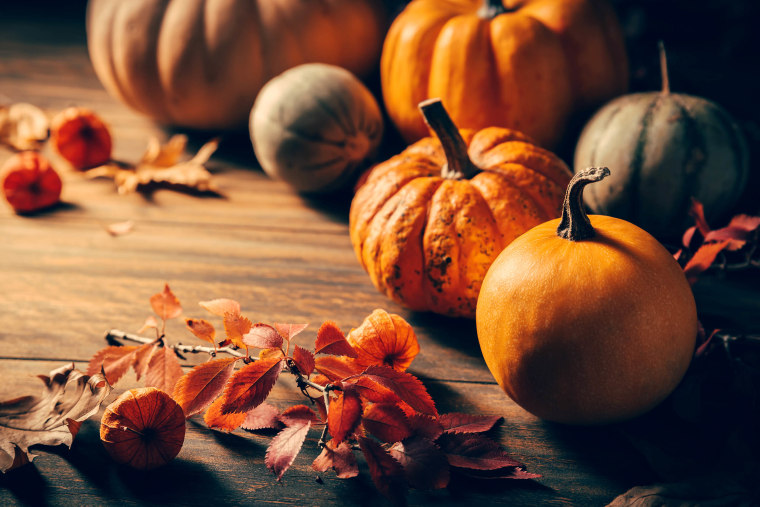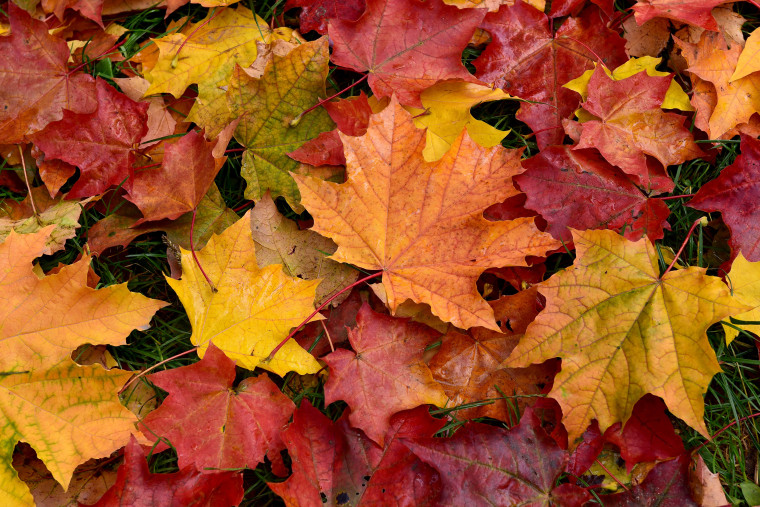When you think of Thanksgiving, what's the first thing that comes to mind?
There's a good chance that it's probably a big turkey dinner, football or, everyone's favorite, the Macy's Thanksgiving Day Parade.
Beyond those iconic Thanksgiving traditions, however, certain colors also evoke thoughts of the treasured American holiday. Much like red and green symbolize Christmas, Thanksgiving has its own set of special hues.
While, technically, just about any color can be incorporated into a Thanksgiving table setting or holiday theme, the Thanksgiving color scheme most people associate with Turkey Day is orange, brown, red and yellow.
"Everyone knows of what has come to be called 'The First Thanksgiving' between the Pilgrims and the Native Americans,' says Melanie Kirkpatrick, author of "Thanksgiving: The Holiday at the Heart of the American Experience."
"It was set in the autumn and, of course, the autumnal colors are red, orange and yellow. So that is the palette of Thanksgiving tables today," Kirkpatrick tells TODAY.com.
However, there's more than meets the eye when it comes to the colors that have come to define one of the most beloved U.S. holidays — including some surprising history about Thanksgiving you might not know.
Whether you're interested in Thanksgiving trivia or just plain curious about colors, we've gathered together (pardon our Thanksgiving pun) a list of interesting facts to help you better understand how Turkey Day hues came to be — and what they are thought to signify.
Here's what to know.
Thanksgiving orange

According to color expert and author, Leatrice Eiseman, one reason the color orange might be associated with Thanksgiving is that it's what's considered a "harvest color."
"Orange is one of the colors we associate with harvest. It's also doubly impactful because it's one of the colors that we think of in the color of fallen leaves," Eiseman tells TODAY.com.
"On top of that, we know that orange is the color of pumpkins and many squashes, which are foods associated with Thanksgiving," she says.
Food, according to Eiseman, is an important influence on color.
"As far as Thanksgiving is concerned, it is a time that we immediately associate with feast, with harvest and good times with family, that sort of feeling," Eiseman says. "So there's that emotional attachment, and each of the colors that are most prevalent in Thanksgiving are the ones that give the immediate messaging."
Thanksgiving red

A popular color for all seasons, red's tie to Turkey Day likely has a couple of origins. The first? Leaves.
"If you think of those fallen leaves again, one of those colors in the fallen leaves is bound to be red," Eiseman says. Think maples, red oaks and other trees that boast brilliant fall foliage.
The other possible link? A common Thanksgiving staple.
"Red is also associated with cranberries," explains Eiseman. "And even though (they) aren't universally loved, still, when we see pictures of a Thanksgiving feast and we see that beautiful red of the cranberry on the table, it's an appetite stimulant, for one thing, and it excites the eye."
Thanksgiving brown and yellow

As for brown and yellow, Thanksgiving's other popular hues, once again, they're likely related to fall and food. What's brown besides leaves? Turkey. And yellow, once again, is the color of fallen leaves and maize or corn.
"It appeals to our sense of taste, as well as our sense of sight," says Eiseman. "And when you've got two senses involved in the emotional impact of color, it has a double impact.
Interestingly enough, according to Kirkpatrick, back in the days of the Pilgrims, the harvest colors we most closely associate with Thanksgiving today might not have been present.
"When the Pilgrims arrived here and, of course, the Indigenous People were already here, the world was in something called 'The Little Ice Age,'" Kirkpatrick says.
"It lasted for a couple hundred years, until around 1850, and it meant that the winters in New England prior to 1850 were even harsher than they tend to be today."
What does that mean?
"Snow was often a feature of the Thanksgiving holiday," Kirkpatrick explains. Which means instead of a cornucopia of colorful leaves as a Thanksgiving backdrop, it was likely freezing, grey and snowy. At least in New England, anyway.
But given that New Englanders were the among the first to celebrate the holiday as they migrated west, they brought their customs with them. "So it was adapted by people from other parts of the country," Kirkpatrick says.
Indeed, much of how we celebrate Thanksgiving today draws from those old traditions, says Kirkpatrick.
"The classic New England Thanksgiving is, I think, one that is set in our minds and in our imaginations."










